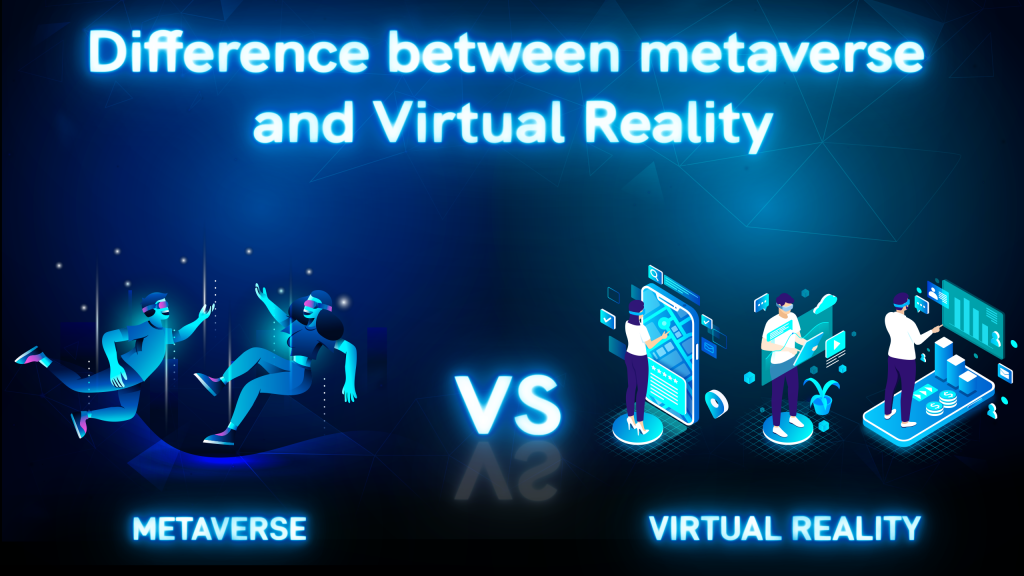
How the Metaverse is Unlike Virtual Reality
Have you ever heard of the term metaverse? It’s been popping up more and more in the news lately, especially with the rise of virtual reality technology. But what exactly is the metaverse, and how is it different from virtual reality?
What is Virtual Reality?
Let’s start with virtual reality (VR). VR is a computer-generated simulation of a three-dimensional environment that can be interacted with in a seemingly real or physical way by a person using special electronic equipment, such as a headset with a screen or gloves with sensors. This technology has been around for a while, but it’s only recently become more accessible and affordable for consumers.
With VR, you can put on a headset and feel like you’re inside a different world. You can explore different environments, interact with objects, and even communicate with other users in that virtual space. It’s a fascinating technology that’s changing the way we think about entertainment, education, and even healthcare.
What is the Metaverse?
Now, let’s talk about the metaverse. The metaverse is a concept that’s been around for even longer than VR, but it’s only recently started to gain more attention. The metaverse is essentially a collective virtual shared space that’s created by the convergence of multiple virtual worlds, augmented reality, and the internet.
Think of the metaverse as a giant, interconnected network of virtual spaces, each with its own rules, culture, and community. It’s a place where you can move between different virtual worlds seamlessly, interact with other users from around the globe, and experience a level of immersion and interactivity that’s not possible in the physical world.
How is the Metaverse Different from Virtual Reality?
So, how is the metaverse different from virtual reality? Here are a few key differences:
Scale and Scope
Virtual reality is typically limited to a single experience or environment. You put on a headset and enter a specific virtual world, and that’s it. The metaverse, on the other hand, is vast and interconnected. It’s made up of multiple virtual worlds, each with its own unique features and experiences. You can move between these worlds and interact with other users, creating a truly immersive and expansive experience.
User Agency
In virtual reality, you’re typically limited to the actions that the designers of the virtual world have programmed. You can interact with objects and move around, but you can’t necessarily change the world around you. In the metaverse, however, users have much more agency. They can create their own virtual objects, design their own spaces, and even contribute to the development of the virtual worlds themselves.
Social Interaction
Virtual reality can be a solitary experience, especially if you’re using it at home. You might be able to communicate with other users in the virtual world, but it’s not the same as interacting with them in the physical world. In the metaverse, social interaction is a core part of the experience. Users can interact with each other in real-time, build relationships, and even collaborate on projects.
Economy
One of the most interesting aspects of the metaverse is the potential for a virtual economy. In some virtual worlds, users can buy and sell virtual goods and services using virtual currencies. This opens up a whole new world of possibilities for businesses and entrepreneurs, and could even lead to the development of entirely new industries.
Conclusion
So, to sum up: virtual reality is a computer-generated simulation of a three-dimensional environment that can be interacted with in a seemingly real or physical way, while the metaverse is a collective virtual shared space that’s created by the convergence of multiple virtual worlds, augmented reality, and the internet. The metaverse is much larger in scale and scope, gives users more agency, encourages social interaction, and has the potential for a virtual economy.
As we continue to develop and explore these technologies, we’re likely to see even more exciting transformations in the way we interact with the digital world. Who knows what the future holds? The possibilities are endless.
- Why Can’t I Make Create A New Folder on External Drive on Mac – Solved - April 28, 2024
- Tips on How to Become a DevOps Engineer - April 28, 2024
- Computer Programming Education Requirements – What You Need to Know - April 28, 2024

